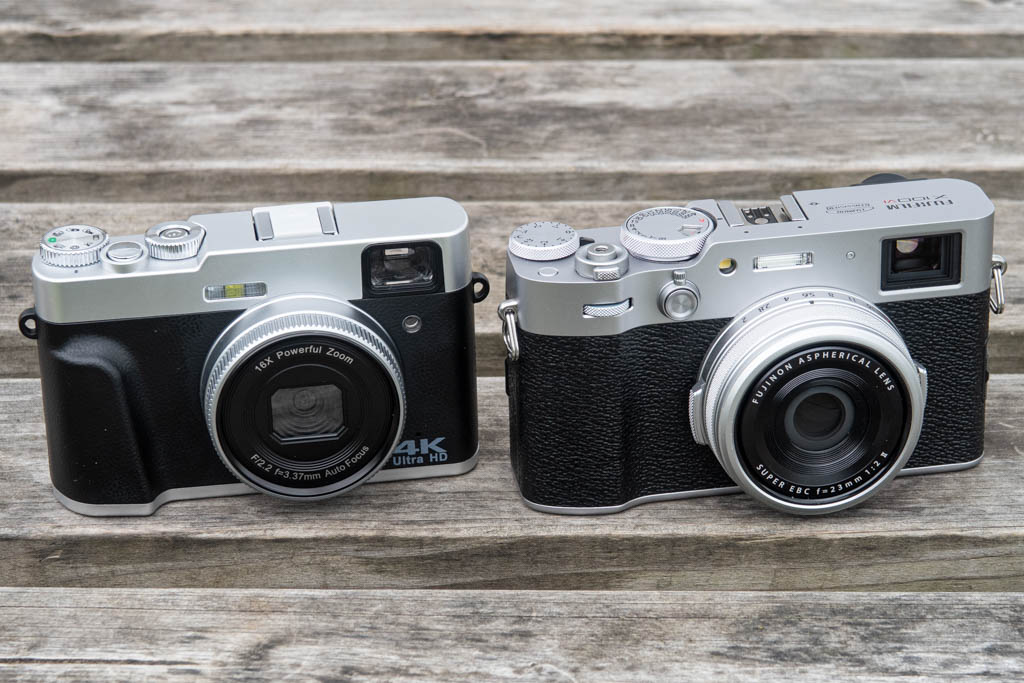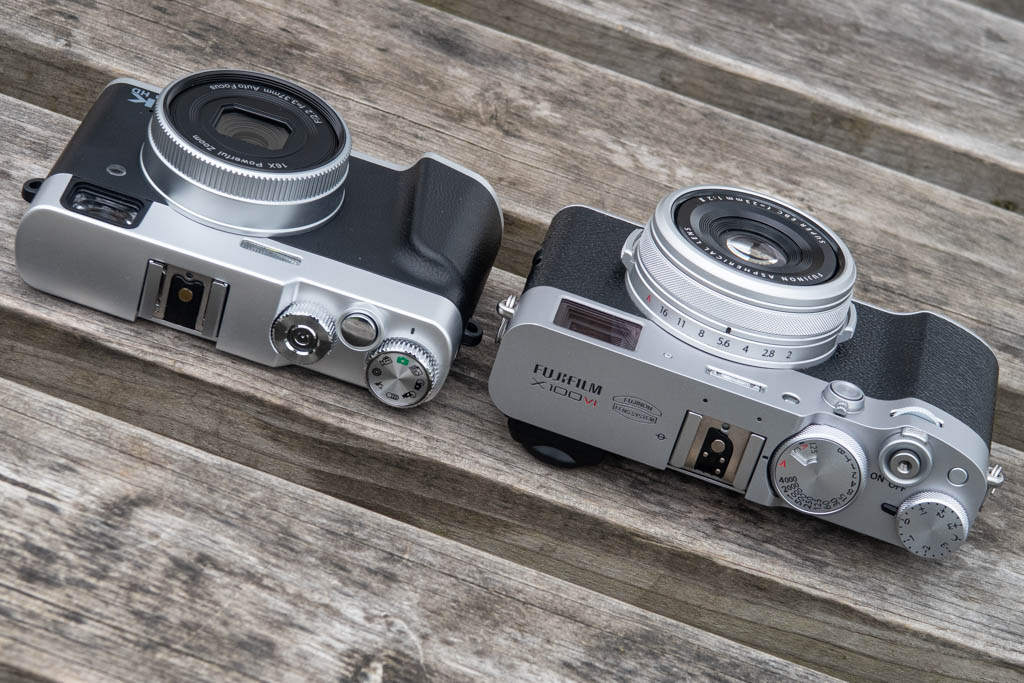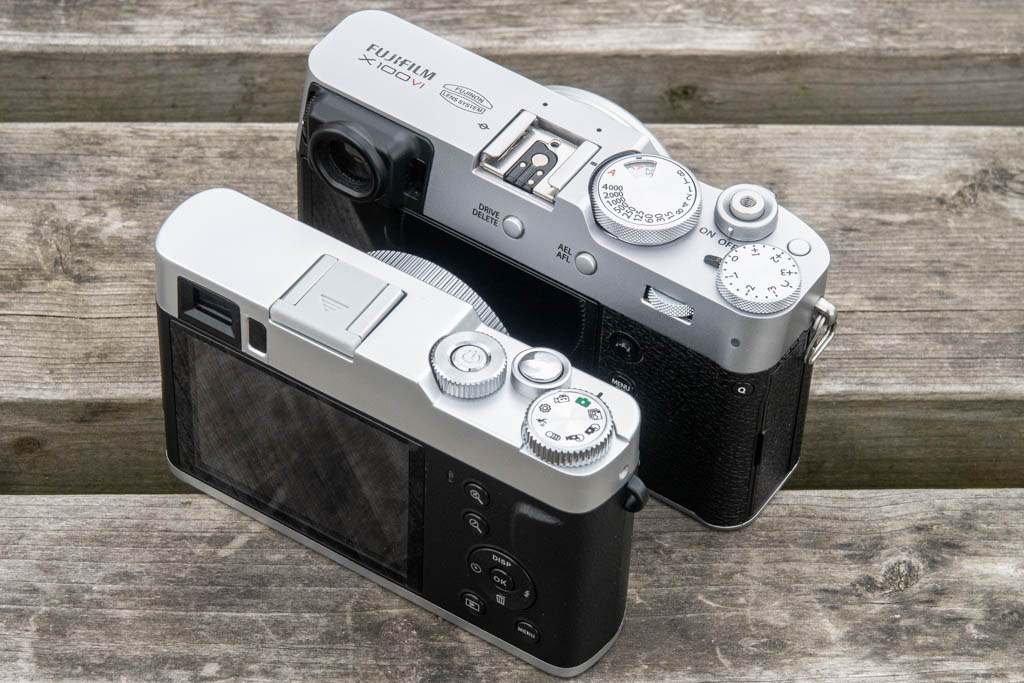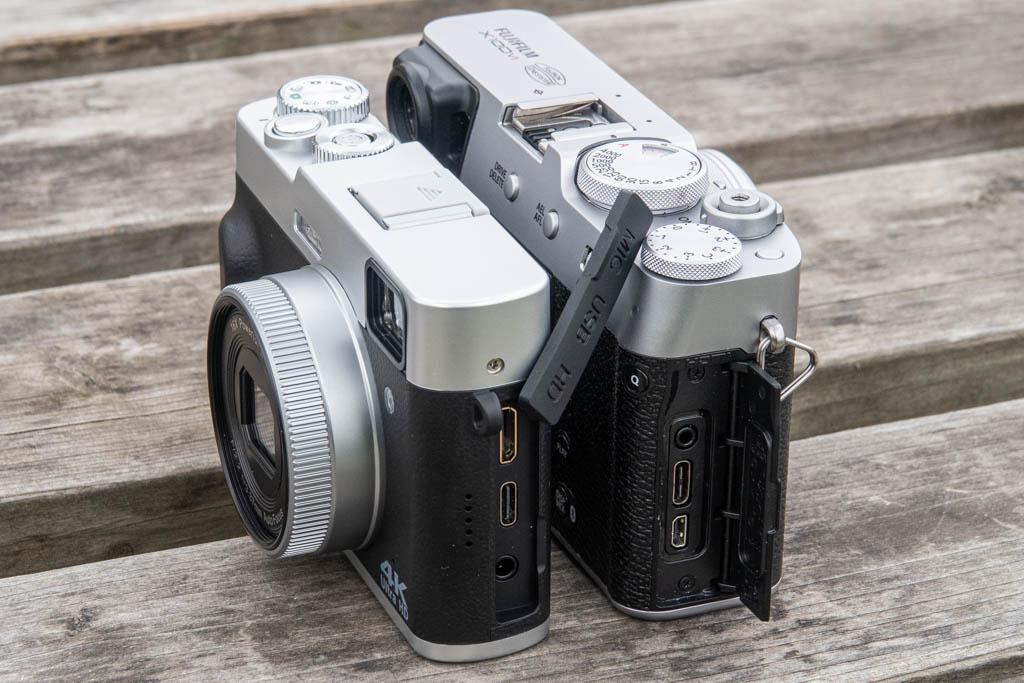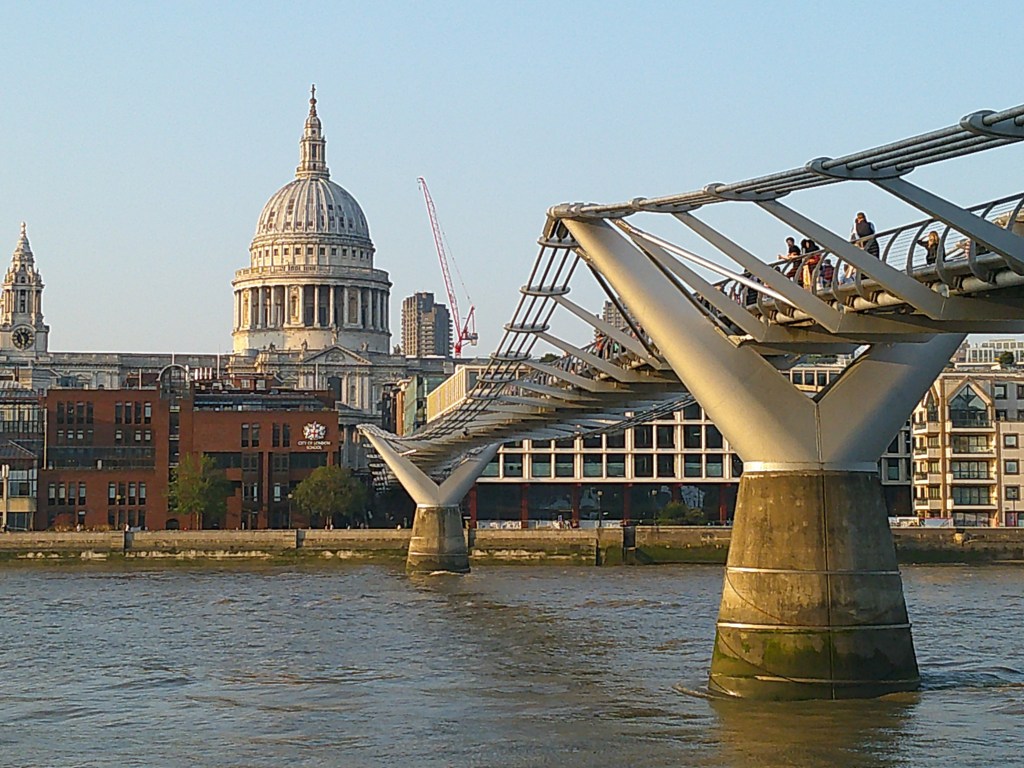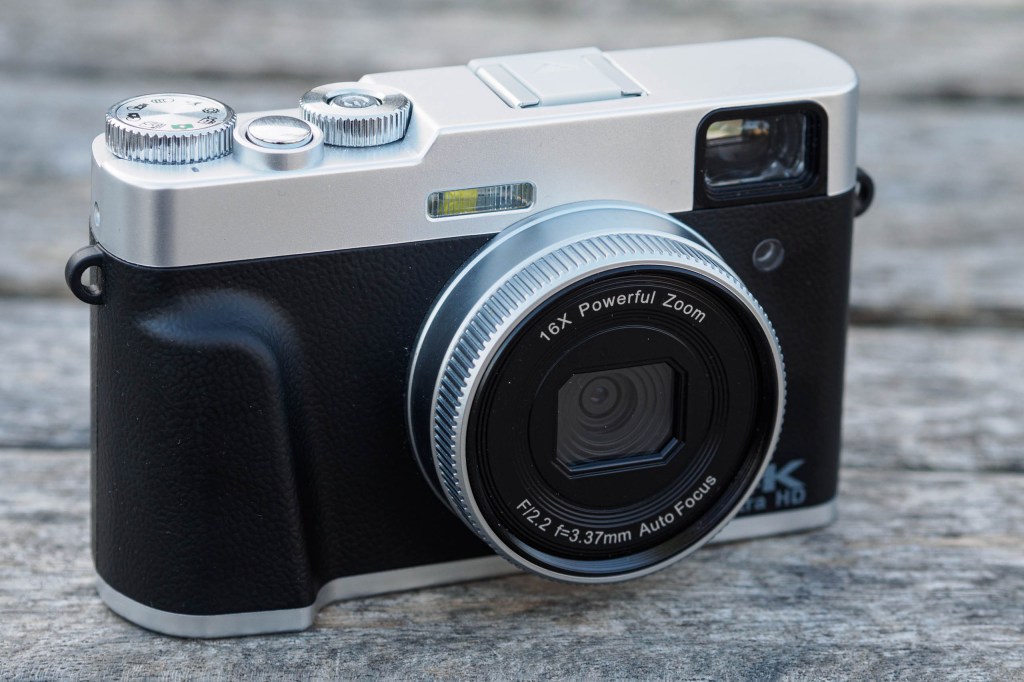Amateur Photographer verdict
You get what you pay for, and that’s certainly true with this cheap ‘fake X100’ digicam. It’s truly awful, with all sorts of flaws and no redeeming features. Avoid it, and any other camera like it.- Handgrip is pretty good!
- Poor image quality for both stills and video
- Terrible viewfinder and dim screen
- Slow start-up time
- Sluggish autofocus and huge shutter lag
- Cheap build with moulded-on fake “control dials”
- Lots of button-pressing in menus to change any setting
- Everything about it, really
A decade ago, you could buy cheap-but-good point-and-shoots from the all main camera makers. But now, smartphones have them killed off. Instead, if you search for ‘cheap digital camera’, all you’ll find is a load of generic unbranded models. But might one of these cameras actually be any good? To find out, I decided to buy this silver-and-black retro-styled model, which looks like a ‘fake X100’.
‘Fake X100’ digicam at a glance:
- £110 (approx, full-price on Amazon UK)
- Small-sensor digicam
- 28mm (equivalent) lens
- 48MP max image size
- 4K video recording
- Optical viewfinder
- 2.8in fixed LCD
Styling cameras to make them look like much more expensive models is nothing new, and this one is clearly trying to make unwary buyers think it’s the wildly popular Fujifilm X100VI. It tends to be listed on Amazon by marketplace sellers for about £110. But I sourced it from AliExpress instead, where it came in at under £40, including shipping from China. Come to think of it, that probably wasn’t a good sign.
Listings for this camera tend to include a jumble of keywords, along the lines of “Digital Camera 4K 48MP Autofocus Optical Viewfinder 16x Zoom Vlogging Camera for Photography Flash Anti-shake Rechargeable Compact Camera for Beginner“, but no actual product name. When it arrived, it turned out to be labelled simply as ‘Digital Camera DC202’, and be made by the Shenzhen Sonida Digital Technology Co Ltd. I wasn’t expecting it to be particularly good, but nothing prepared me for quite how bad it’s turned out to be.
Is it really a ‘Fake X100’?
Of course, this camera isn’t a ‘fake’ as such. Neither the maker, nor any seller with a shred of sense, is going to associate it with the Fujifilm X100 series. But just take a look at the slideshow below showing the Sonida DC202 side-by-side the Fujifilm X100VI. It really isn’t hard to work out where the design inspiration has come from.
Missing specs
Obviously, the first thing I’ll look for when assessing a camera is the main specifications. But that’s not so easy here. Yes, there’s a spec table in the instruction manual, but it’s missing key information. Most importantly, there’s nothing on the sensor size, type, or resolution.
Instead, we’re simply told that that camera can output JPEG images at a wide range of sizes, from 2MP right up to 48MP. But 12MP is the default, which perhaps suggests this might be the native sensor resolution. Video can be recorded in the AVI format at up to 4K resolution, but with no mention of framerates, let alone bit rates.
At least we know what the lens is, right? It’s emblazoned with “F/2.2 3.37mm Auto Focus” on the front, along with “16X Powerful Zoom”. Except when you look at your images on a computer, it reports as 6mm f/2.8 in the EXIF. Whichever of these it really is, it gives a roughly 28mm equivalent view.
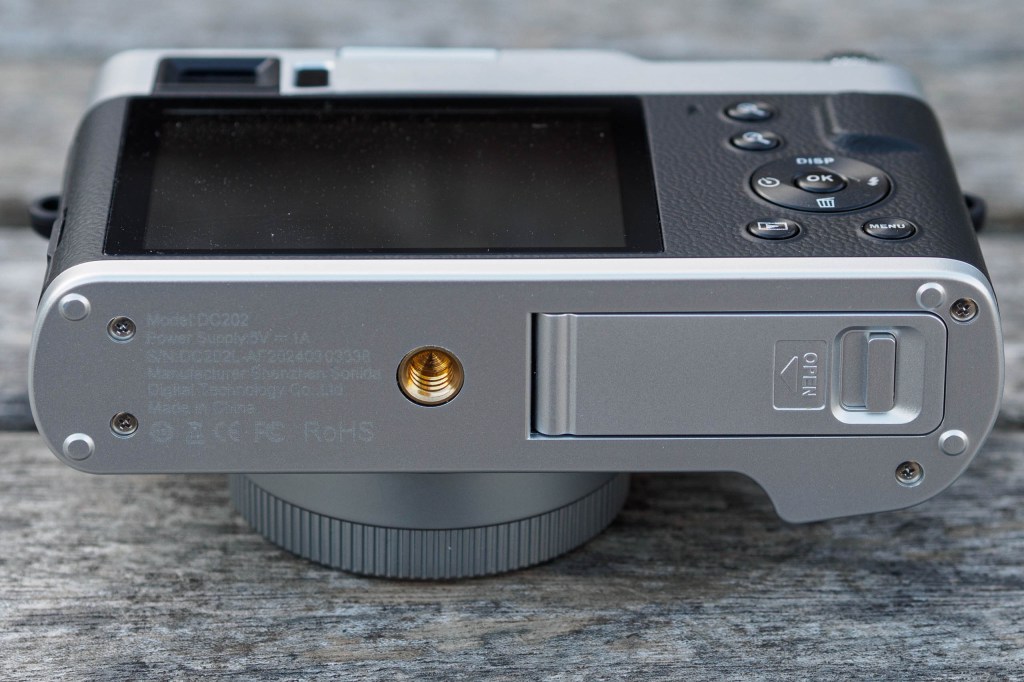
That ‘16x zoom’ claim isn’t really true, though. In reality, the camera provides up to 4x digital zoom, with image quality inevitably going downhill fast. This does equate to getting 1/16 of the original image area, but that’s not what ‘X’ means when talking about zoom. At least the autofocus is real, although it only uses a single, relatively large area in the centre of the frame.
Manually selectable ISO settings are limited to 100, 200, and 400, but the camera will go much higher when set to Auto. Exposure compensation can be set across +/-3 EV, but only in whole-stop increments.
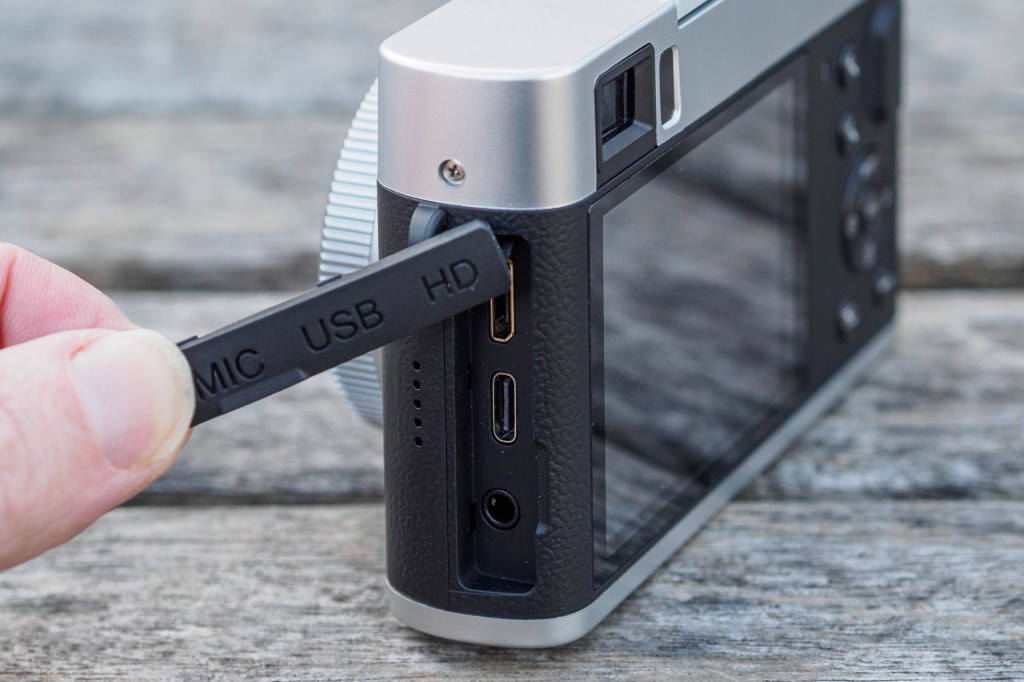
A continuous shooting setting is included, which turns out to take 3 frames at roughly 1-second intervals, so it’s not exactly a speed monster. You also get time-lapse shooting modes for recording still images or creating a video.
Along with a basic Auto mode, you get a set of scene modes for different types of subjects – night, portrait, landscape, sports, etc. An array of in-camera processing ‘Effects’ is available, with some being fairly standard fare, such Vivid and Monochrome. But others are quite strange; for example, there’s an ‘IR’ option that just adds a very strong magenta tint. As the camera only shoots JPEGs, these effects are baked-in to the image file.

A small flash is built-in, but it’s of the LED type, rather than a much brighter Xenon tube, as found in ‘proper’ compact cameras. This makes it of rather limited usefulness. There’s also a hot shoe on top, complete with centre contact, but I couldn’t persuade it to trigger any of my external flash units that work fine on other cameras.
Files are recorded to a MicroSD card, and you’ll need to copy your images off this for sharing them, as there’s no smartphone connectivity of any kind. Power is provided by an NP-60 battery, which charges via the USB-C port. The same battery type was widely used by compact cameras in the past, from brands including Fujifilm, Kodak, Pentax, Panasonic, and Ricoh, which means spares are fairly easy to find.
Cheap build, poor handling
Given the price, it shouldn’t come as a surprise to hear that this camera feels cheaply built. The maker doesn’t even bother to provide any dimensions in the manual, but I measured them as 115 x 72 x 45mm and 227g. This is noticeably smaller than the Fujifilm X100VI, and well under half the weight. The silver-coloured top and base plates are, of course, plastic.
Thanks to a small finger grip on the front and a textured covering, the camera is actually surprisingly comfortable and secure to hold one-handed. But this is about its only redeeming feature, because in every other respect, it’s horrible to use.
On the top, you’ll find a power button, shutter button, and mode dial. The latter is extremely loose, so when you take the camera out of your bag, it’s unlikely to be in a same position as you left it. Instead, it’s a lottery as to what mode the camera will be in when you turn it on.
You don’t get the usual PASM shooting modes, not least because the aperture is fixed. Instead, an unintelligible set of icons denotes Camera, Multi-Snapshot, Time Lapse Photo, Time Lapse Recording, Slow Motion, Motion Detection, Setup, and Video modes. Some of these are also available as menu options in the standard camera mode, but others are not.

Ridged rings around the lens and the power button are clearly supposed to look like proper control dials. But in reality, they’re nothing more than cosmetic mouldings. Instead, a small cluster of buttons on the back controls the camera. There’s a pair of buttons marked + and – to operate digital zoom while shooting, and to magnify images in playback. Otherwise, almost all the functions and settings are accessed via the Menu button.
Menus are cartoonishly drawn, with large, square onscreen buttons arranged in a grid. This layout will look instantly familiar to anyone who’s ever used a smartphone (i.e. everyone), with the catch being that the camera doesn’t actually have a touchscreen. Instead, you have to use the 4-way d-pad to adjust anything. This rapidly gets annoying – for example, it takes up to 11 button presses to change the ISO manually.

Many other aspects of the camera’s operation are dreadful. For example, you can’t quickly exit playback or the menus to take a photo by half-pressing the shutter button. Instead, to exit playback you have to press ‘play’; what’s more, if you’re in a zoomed or thumbnail view, you have to hit ‘OK’ first. From the menus, you need to press either Menu or OK to return to shooting, depending on where you are. You will inevitably forget to do this at times, and consequently miss shots.
Early digicams had a similar problem with getting stuck in play mode, so I guess it brings a certain retro feel. But the real camera makers recognised and fixed this problem a couple of decades ago. No matter that you’re doing with a camera, it should always be possible to get back to shooting just by tapping the shutter button.
Terrible viewfinder
One thing that initially attracted me to this model is that it has an optical viewfinder, which is now vanishingly rare on compacts. But I needn’t have bothered, as the viewfinder is remarkably poor. Everything looks blurry, and the viewing angle is dramatically tighter than the actual lens. Once again, it feels like a feature that exists only to make the camera look like something it isn’t.
Thankfully, the rear LCD screen isn’t quite as bad. It’s decently sized, at 2.8in in diagonal, and appears to preview colour and exposure pretty accurately. It’s not very bright, though, and can easily get overwhelmed in sunlight. Even so, I ended up using it all the time.
If you do choose to use the viewfinder, a sensor beside the eyepiece switches off the screen automatically to conserve power. Strangely, though, the screen will light up briefly to confirm autofocus before shooting, and then display the image for a second afterwards. This behaviour can’t apparently be changed.
Glacial autofocus
It’s almost a surprise to find that a camera of this type has proper autofocus, rather than relying on the extensive depth-of-field provided by the small lens and sensor. Unfortunately, though, the focusing is tediously slow and uncertain.

Half-press the shutter button, and the lens will rack back and forth for a second or two before, eventually, the AF box goes green and the camera (perhaps) deigns to take a picture. Don’t even think of trying to focus on anything that moves.
Autofocus is limited to a square area that’s fixed in the centre of the frame. So for off-centre subjects, you need to fall back on the good old-fashioned focus-and-recompose method.

Help appears to be at hand, though, in the form of face detection. Enable it, and the camera will outline human faces and then track them, somewhat hesitantly, around the frame. It’s not entirely clear why, though, as when you half-press the shutter, it can still only autofocus in the centre of the image.
I thought I’d try to take a selfie in front of an iconic London skyline, but the camera decided to focus on the background instead. It’s probably for the best.
Poor performance
When you try to use the DC202 in practice, you’ll find it’s extremely slow and annoying. It takes a couple of seconds merely to turn on, and the cheery ‘Welcome’ screen that’s displayed while you wait counts as little consolation as you watch your subject move on elsewhere. It says ‘Bye Bye’ when you switch it off, too; I’m afraid my reaction was rarely as polite.

Shutter lag is terrible, too, and there’s no clear feedback to indicate if or when the camera has actually managed to take a picture. Use this camera for street photography, and you’ll find it’s perfectly attuned for shooting at the indecisive moment. I had to train myself to hold the camera still for longer than seems remotely necessary. Even so, I got plenty of images that were unusably blurred after I moved the camera too soon after pressing the shutter release.
Battery life isn’t exactly great, but is somehow made to feel even worse by the way the power indicator works. It starts off green, but only very briefly, then goes white, before alarmingly turning red. But then the camera happily keeps on shooting for quite a while longer. I was able to get 180 shots from a single charge, or in other words, about 170 more than you’re ever likely to want to take.
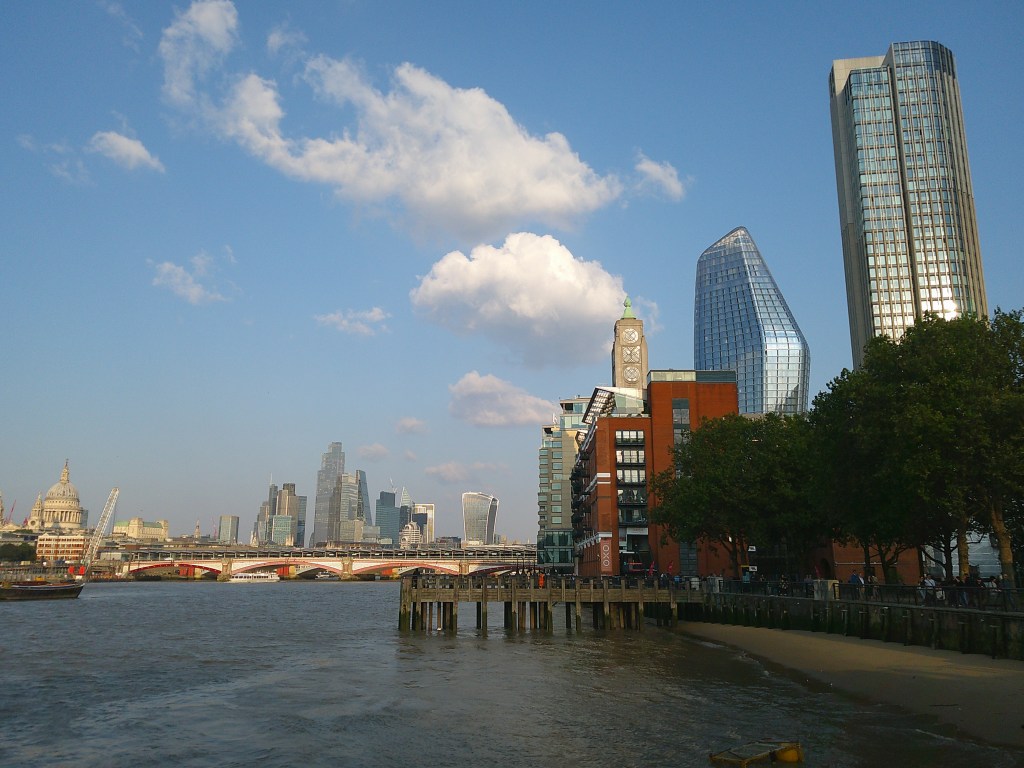
Image quality is broadly in line with what I’d expect from a digicam with a tiny sensor and lens, i.e. not very good at all, even at ISO 100. Examine the 12MP JPEGs close-up onscreen, and you’ll see little in the way of fine detail, just smudging due to noise reduction, and ugly sharpening haloes. Select a larger output size, and the files are simply upsized.
Using the digital zoom turns out to be a bad idea. The zoom actually works in two stages: the first is shown in orange on the onscreen zoom scale, covering up to 2.5x zoom. Beyond this, the scale goes red through to 4x zoom. At lower zoom levels, things aren’t necessarily completely terrible. But in the red zone, images look poor even on the camera’s own LCD, and are awful on a computer screen.
Dynamic range is inevitably limited, too, with highlights clipping to white all too easily. Colour rendition as nice enough at least, especially on sunny days. But even so, pretty much any smartphone should take considerably better photos these days.
Video quality isn’t great, either. 4K video looks reasonably crisp and detailed, but with jerky motion that looks like it’s recorded at about 15fps. On the other hand, Full HD video is mushy and lacks any real detail. Perhaps the least-bad compromise overall is 2.7K.

Unusually, the audio gradually fades in at the start of the recording. The camera’s built-in mic is terrible, and easily gets overwhelmed by wind outdoors. You can use an external mic via a 3.5mm socket, but the camera doesn’t provide the plug-in power that basic on-camera mics require. Instead, you need a microphone with its own battery, which will probably cost more than the camera.
It’s also possible to use the DC202 as a webcam, simply by plugging it into a computer via its USB-C port, and then selecting the ‘PC Camera’ mode. But the problem here is that autofocus doesn’t function, with the focus instead being fixed on the background. This really isn’t what you want a webcam to do.

Given all these failings, it almost comes as a surprise to find out that the camera’s HDMI output works entirely sensibly. You can use it to view photos and videos on a TV, or even attach an external monitor for video shooting.
Our Verdict
OK, I bought a camera on AliExpress for less than £40. I shouldn’t have expected much. But while I knew it would be bad, this ‘fake X100’ has turned out to be terrible in all sorts of ways I could never have imagined. Whenever I thought it couldn’t get any worse, it found yet more ways to surprise me.
Everything about the camera seems to have been designed to trick unwary buyers into thinking they’re getting something they’re not. Particular lowlights include the terrible viewfinder, fake ‘control dials’, and the menu system that’s designed to look like a touch interface, but on a non-touch-sensitive screen. Photo and video quality are poor, and will be easily surpassed by any recent smartphone.
I’m trying my hardest to think of something this camera might be good at, but honestly, there’s nothing. No matter what you try to do with it – portrait, landscapes, or street photography – it’s equally unaccomplished. Perhaps that makes it an all-rounder of sorts – or should that be a no-rounder?

Even if you’re after the trendy vintage digicam look, this camera is a poor choice – check out our recommendations for Vintage digital cameras you should actually buy instead. I guess that for the £40 I paid on AliExpress, it might might perhaps make sense as a starter model for kids. But don’t even contemplate paying two or three times that on Amazon. Overall, I don’t think I can really recommend it – or any other cheap digicam like it – to anyone.
Follow AP on Facebook, Twitter, Instagram, YouTube and TikTok.
Specifications (best guess)
| Sensor | Not specified |
| Output size | 4000 x 3000 (default) |
| Lens | 3.37mm f/2.2 with autofocus |
| Shutter speeds | Not specified |
| Sensitivity | ISO 100-400, Auto |
| Exposure modes | Auto, scene, high sensitivity |
| Metering | Not specified |
| Exposure comp | +/-3EV in 1EV steps |
| Continuous shooting | Approx 1fps |
| Screen | 2.8in IPS HD |
| Viewfinder | Optical |
| AF points | 1 |
| Video | 4K, 2.7K, Full HD |
| External mic | 3.5mm (no plug-in power) |
| Memory card | MicroSD |
| Power | NP-60 LI-ion |
| Battery life | Not specified |
| Dimensions | 115 x 72 x 45mm |
| Weight | 227g |


